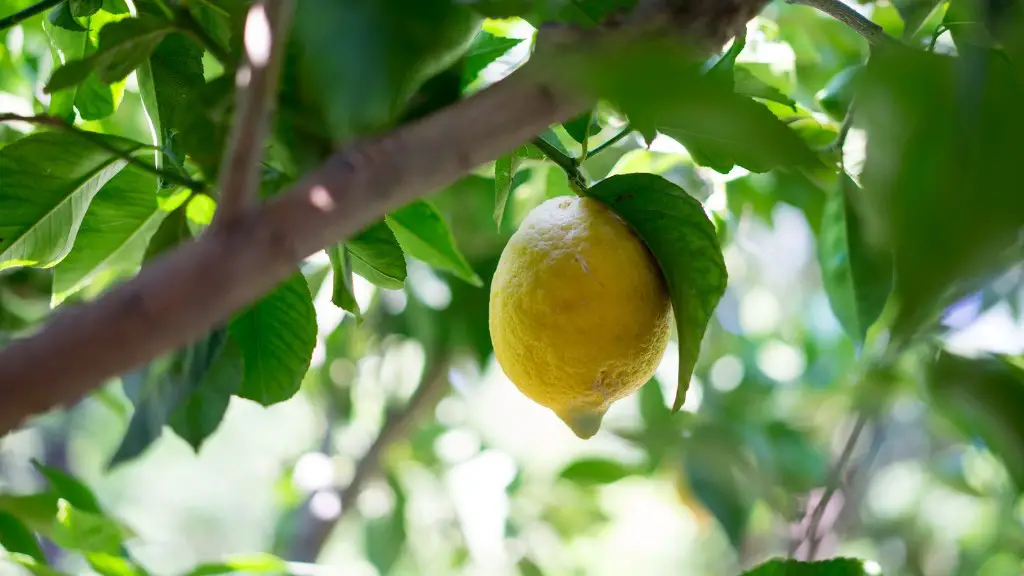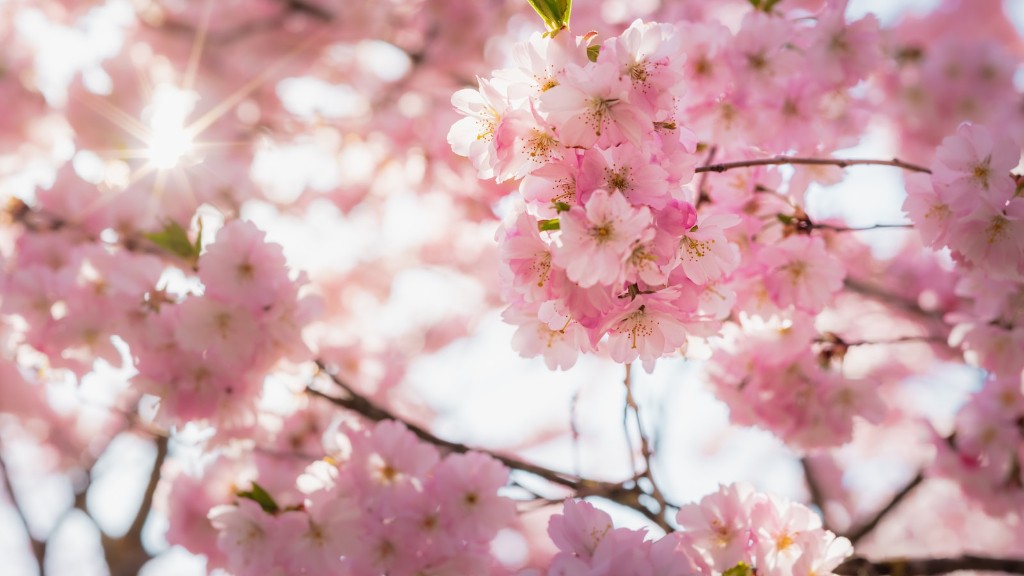Spring is the ideal time to plant a lemon tree outside. When temperatures outside are steadily balmy, the transition of putting a lemon tree outdoors won’t be too sudden. Even so, if the weather begins to change quickly and unexpectedly, a lemon tree can be vulnerable to the cold weather. To ensure that a lemon tree is safe to be planted outside, verify that the average nighttime temperature is consistently above 55°F and the monthly lowest temperature is 40°F. Once you are sure the chilly nights won’t affect your lemon tree, you can begin the process of planting it.
The first step is to dig a hole for the lemon tree. Generally speaking, the hole needs to be two feet wide and two feet deep. This allows the tree roots to spread out and provides a space for loose soil to cushion the tree. After the hole is dug, fill it with a mixture of soil, compost, and a soil amendment to help the lemon tree thrive. Then lower the lemon tree into the soil and fill the remaining gaps with the soil mixture.
The next step is to secure the lemon tree. To do this, anchor the tree in the ground by using staking. Place two stakes on either side of the lemon tree. Then tie them together with strong materials like garden tape, sisal rope, or jute twine. Finally, create a canopy for the lemon tree with a well-anchored stake screwed temporarily into the ground or with a stake wall.
Once the lemon tree is secure in its new position, add a three to four inch layer of organic mulch. This helps your lemon tree create more efficient roots and protect it from extreme weather conditions like cold temperatures, hot temperatures, and extra moisture. After mulching, water your lemon tree until the soil is completely damp.
Finally, instead of using traditional fertilizers, feed your lemon tree with a slow-release fertilizer. This fertilizer promotes more efficient nutrient intake and can be used throughout the growing season.
When And how to irrigate
Lemon trees require consistent moisture to produce juicy oranges, but be sure to water them smartly. Water deeply and occasionally—about once a week—until temperatures start to drop and the rain becomes more consistent. During the winter, water your tree sparingly, giving it just enough to keep the ground slightly moist.
When watering your tree, use a garden hose or a watering can. The next step is to check the irrigation system. Make sure the tree is receiving water evenly by performing a test. To do this, dig in the soil to see if the water is getting to the root system. Also, check for any leakages or clogs in the system.
When irrigating your tree, water it in the morning when the temperature is lower in order to reduce water loss and to prevent the tree from getting sunburned. Also, ensure that the water is spraying in a circular motion to evenly moisten the entire area around the tree.
In addition, add extra care to new trees. During the first year, they require more water than a grown tree and need to be watered every two weeks. As the tree matures and becomes more adapted to its environment, it will require less water.
Fertilizing and pruning
Fertilizing is a crucial part of taking care of a lemon tree. Use a citrus-specific fertilizer twice a year, usually in spring and fall, with a slow-release fertilizer in between. When applying the fertilizer, follow the manufacturer’s instructions and never over-fertilize. Over-fertilization can lead to poor lemon production and even kill the tree.
Finally, prune your lemon tree once a year in spring to keep it healthy and strong. Pruning encourages new growth and production of lemons. When pruning, start at the top of the tree by cutting off dead or diseased branches and then trim any lateral branches to promote growth.
After cutting off the branches, remove all of the extra leaves and stems. This will help the tree produce a beautiful fruit and keep it healthy. Finally, spread organic fertilizer throughout the root area and use a biological fungicide on any diseased or damaged areas.
Protecting Against Pests
As a citrus tree, your lemon tree is susceptible to many pests like aphids, mealybugs, and scale. Thankfully, there are many ways to keep pests away from your tree. The best way is to maintain an environment where it can grow healthy and strong.
Remove any fallen leaves or fruit near the lemon tree, as these are harbingers for pests. Also, inspect your tree for signs of pests, such as discolored leaves, chewed leaves, or sticky residue. If you see any of these signs, isolate the infected area and treat it with an insecticidal soap or an insecticide.
Of course, natural methods of pest control are a great choice, too. For example, you can use beneficial insects like ladybugs to eliminate pests without harsh chemicals. Additionally, you can use nematode treatments to protect your tree throughout the year.
Handling Extreme Temperatures
Since lemon trees are sensitive to both hot and cold temperatures, you need to make sure the tree is protected during both seasons. During the summer, mulch with several inches of organic materials beneath the canopy to provide insulation. This will protect the tree from hot temperatures and aid in moisture retention.
In winter, mulch your tree with several more inches of organic material. This will also help protect the tree from freezing temperatures. Additionally, check for any potential wind exposure and use a wall of burlap if needed. This will help keep the cold winds away from the tree.
Finally, if frosts are a concern, cover the tree with a frost blanket or add a cloche made of clear plastic. This will create a mini-greenhouse effect and help protect the tree from cold temperatures.
Using Herbicides and Insecticides
When planting a lemon tree, chances are you’ll need to use some protective chemicals. Some herbicides and insecticides can be used to protect the tree from weeds and pests. But always read the labels carefully before applying any chemicals, as overuse can damage your tree.
When selecting a pesticide or herbicide, look for one that’s designed for citrus trees and follow the instructions carefully. Always apply chemicals evenly and with caution. Be sure to wear protective gear and gloves, and avoid getting any of the chemicals on your skin or eyes.
If you must use insecticides or fungicides, choose one that is targeted to the specific pest you’re dealing with. Never mix chemicals, as this can lead to harmful chemical reactions. Also, avoid applying them on a windy day, as this can spread the chemicals, and always wait an hour before watering.
Conclusion
Preparing to move your lemon tree outside and ensuring it’s safe and secure can seem like a lot of work, but the end result of having a tree that produces delicious, juicy lemons is well worth the effort. With the right preparation and care, your lemon tree will grow and thrive for years to come.



